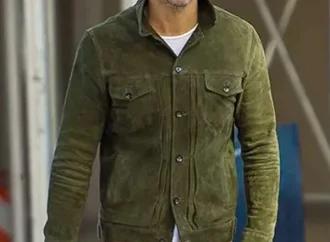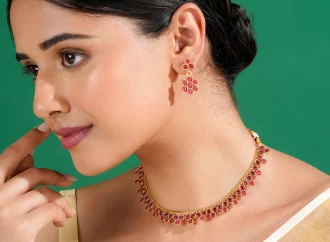In the contemporary fashion landscape, where individuality and cultural commentary reign supreme, few items encapsulate the spirit of modern fashion quite like the Loverboy hat. Whether seen perched on the heads of runway models or snapped on fashion-forward youth in city streets, the hat has emerged as a distinctive symbol of bold creativity and gender-fluid
In the contemporary fashion landscape, where individuality and cultural commentary reign supreme, few items encapsulate the spirit of modern fashion quite like the Loverboy hat. Whether seen perched on the heads of runway models or snapped on fashion-forward youth in city streets, the hat has emerged as a distinctive symbol of bold creativity and gender-fluid identity. But beyond its aesthetic appeal, the Loverboy hat represents a larger movement in fashion — one that blurs the lines between art, identity, and style.
The Origins: Charles Jeffrey LOVERBOY
To understand the prominence of the Loverboy hat in today’s fashion world, one must first delve into the origin of the LOVERBOY brand. Founded by Charles Jeffrey, a Scottish designer and graduate of Central Saint Martins, the brand began as a club night in London before evolving into a fully-fledged fashion house. Charles Jeffrey LOVERBOY is now celebrated for its punk-inspired aesthetic, theatrical flair, and strong embrace of queer identity.
The Loverboy hat, specifically, became an emblem of the brand’s visual signature. Drawing inspiration from traditional Scottish headwear like the Tam o’ Shanter, yet reimagined with fantastical and exaggerated elements — like oversized pompoms, felted shapes, and vivid colors — the hat quickly gained cult status.
A Fashion Statement Rooted in Subversion
In a world often ruled by minimalism and conformity, the Loverboy hat is a proud act of rebellion. With its playful, almost cartoonish design, it flies in the face of traditional notions of high fashion. It’s not just a piece of clothing — it’s a provocation, a declaration, and a work of art.
At its core, the Loverboy hat is about queering the norm. It invites wearers to express themselves without apology. The hat’s exaggerated proportions and vibrant textures challenge the idea that fashion must be sleek, reserved, or gendered. Instead, it exists in a space that is proudly maximalist, joyful, and inclusive. Its form encourages wearers to explore who they are, or who they might want to become, without fear of judgment.
Cultural Resonance and Fashion Impact
While the hat itself is a clear product of avant-garde design, its influence has extended far beyond niche fashion circles. Thanks to social media, street style blogs, and high-profile celebrity endorsements (such as Harry Styles and Ezra Miller), the Loverboy hat has transcended its runway origins to become a recognizable symbol in pop culture.
Its rise coincides with a broader cultural shift — particularly among Gen Z — toward authenticity, non-binary fashion, and self-expression over adherence to trends. The Loverboy hat is often seen not just as an accessory but as a form of identity signaling: a way for wearers to express alignment with values like gender inclusivity, artistic freedom, and anti-establishment ethos.
Moreover, the hat has inspired a wave of imitators and homages, sparking DIY movements where fans craft their own versions. Knitters and crafters on platforms like Etsy and TikTok replicate the iconic look, adding personalized touches and breathing new life into traditional textile crafts. This democratization of high fashion — turning it into something participatory rather than elite — further solidifies the Loverboy hat’s cultural relevance.
Breaking Fashion Norms
The Loverboy hat functions as both armor and invitation. Its boldness offers a kind of shield — wearers stand out, but also create a protective layer of confidence. Yet it also invites interaction: curiosity, conversation, admiration, even critique. In this sense, it mirrors the function of historical fashion items like the top hat or feathered headdresses — status markers that say as much about the wearer as about the time in which they live.
Importantly, the hat challenges the notion that accessories are mere finishing touches. In the world of LOVERBOY, the hat is the centerpiece. It anchors an outfit, starts the conversation, and carries narrative weight. It’s theatrical and performative, yet deeply personal.
Jeffrey’s use of the hat also nods to theatrical traditions, drag culture, and the performativity of gender. In fact, much of LOVERBOY’s ethos resonates with queer performance and club kid culture, where fashion is about transformation and celebration. The hat, then, becomes a tool of becoming — part of a visual vocabulary for self-creation.
Sustainability and Craftsmanship
In an era increasingly concerned with sustainability and slow fashion, the Loverboy hat also speaks to the value of craftsmanship. Unlike mass-produced fast-fashion items, each piece often involves a degree of hand-finishing and textile manipulation that makes it unique. LOVERBOY’s focus on repurposing, upcycling, and working with artisans aligns the hat with eco-conscious fashion trends, despite its avant-garde appearance.
Moreover, the hat’s longevity in the fashion conversation — resisting the fate of being a mere seasonal trend — suggests a sustainable model not just in materials but in cultural impact. It’s not just a hat of the moment; it’s one that continues to evolve with the times.
Fashion as Performance
One cannot discuss the Loverboy hat without discussing the performative nature of Charles Jeffrey’s collections. His runway shows are not typical fashion presentations; they are full-blown spectacles, incorporating dance, drama, and storytelling. The hat plays a central role in these performances, often acting as both costume and symbol.
In a sense, the Loverboy hat is a metaphor for fashion’s potential — a site where the personal and political converge. Wearing one can be an act of resistance, an artistic expression, or simply a joyous declaration of selfhood.
The Genderless Revolution
The Loverboy hat also arrives at a time when the lines between men’s and women’s fashion are being deliberately blurred. Charles Jeffrey’s work — and the hat in particular — challenges traditional gender binaries. The hat has no assigned gender. Anyone can wear it, style it, reinterpret it.
In this way, it mirrors the fashion industry’s growing embrace of genderless design. Brands like LOVERBOY, Telfar, and Collina Strada are leading the charge, and the hat acts as a visible marker of this change. Its whimsical shape may appear innocent, but its message is radical: identity is fluid, fashion is inclusive, and expression is limitless.
Commercial Success vs. Artistic Integrity
Despite its high-concept origins, the Loverboy hat has managed to bridge the gap between commercial viability and artistic expression. While many avant-garde pieces remain confined to editorials or museum exhibits, this accessory is wearable, collectible, and increasingly accessible.
Collaborations with mainstream retailers and appearances in fashion magazines have broadened its reach without diluting its message. Charles Jeffrey has proven that fashion can be both experimental and profitable — a balance that many designers struggle to strike.
Conclusion: The Modern Title in Fashion
The Loverboy hat is more than just a trend. It is a modern icon — a wearable manifesto that celebrates freedom, identity, and artistry. In a world often dominated by algorithmic trends and homogenized aesthetics, the hat stands out as a deeply human creation. It represents the playful, the political, and the personal all at once.
As fashion continues to evolve, the Loverboy hat serves as a reminder of what makes the medium powerful: its ability to communicate, transform, and inspire. In this sense, it is not just an accessory — it is a modern title in fashion, one that crowns its wearers with courage, imagination, and unfiltered individuality.






















